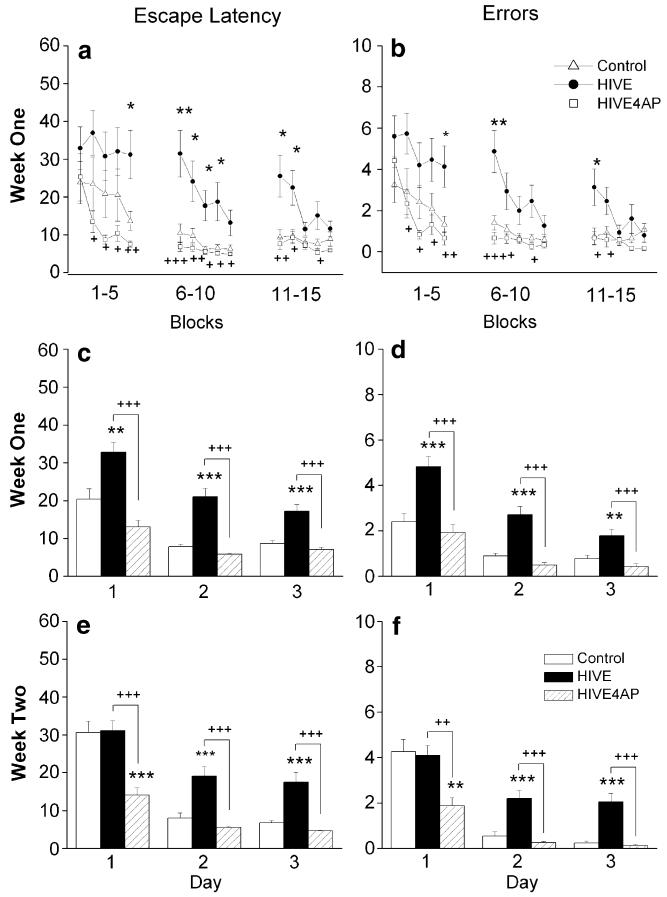Fig. 2.
4-AP ameliorates learning and memory deficits in HIVE mice. Water maze escape latency and error analysis were used to evaluate spatial learning and memory behavior. SCID mice were injected with either HIV-1ADA-infected macrophages (HIVE) or uninfected macrophages (Control), and a subgroup of HIVE mice were subsequently i.p. injected each day with 5 mg/kg 4-AP. A 3-day protocol, consisting of five blocks of three trials each, for a total of 15 trials per day, was performed 1 and 2 weeks after injection. The amount of time required to discover the hidden platform (escape latency) and the number of incorrect arm choices (errors) were recorded for each trial. One week after inoculation, block analysis by escape latency (a) and errors (b) indicates slower learning, inter-day forgetting, and submaximal performance plateaus in HIVE animals, which were not seen with 4-AP administration. Day analysis reveals significant deficits (in both escape latency and errors) in HIVE animals at weeks 1 (c, d) and 2 (e, f) after inoculation, as well as recovered performance in 4-AP treated HIVE mice. The y-axes in a, c, and e are escape latency in seconds, and in b, d, and f are error frequency

